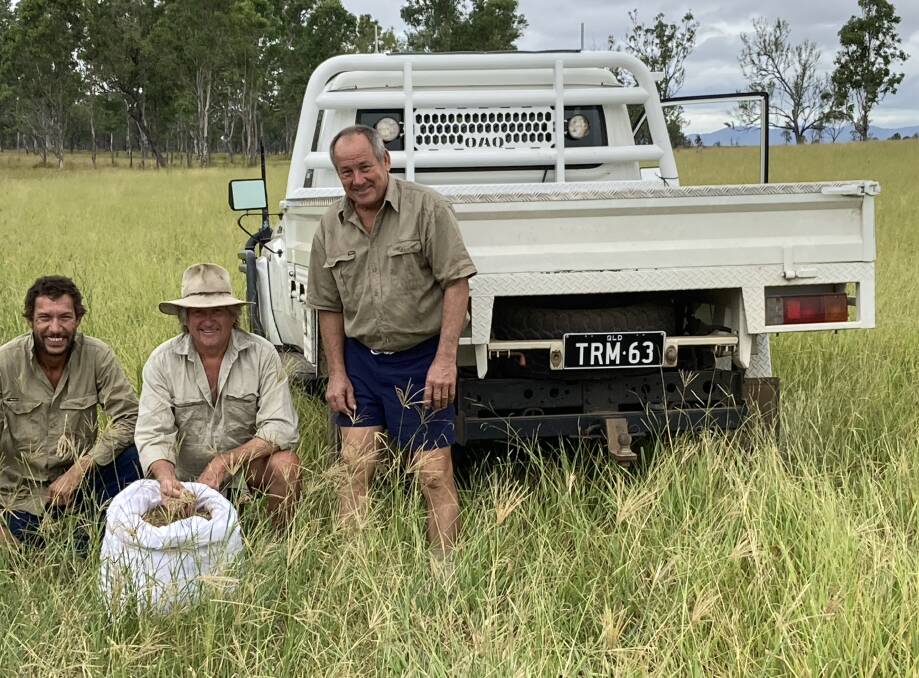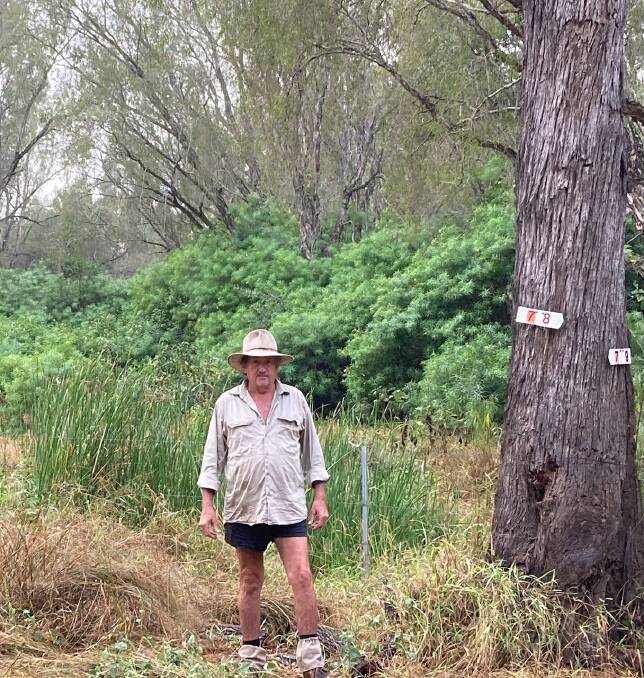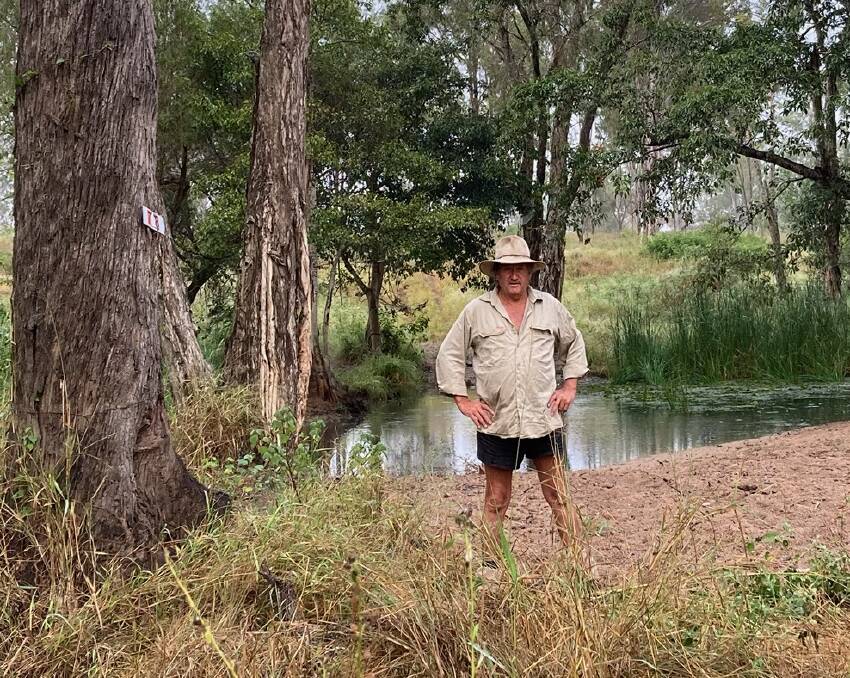Pastures key to renewal at Manersley

This is branded content for Department of Agriculture and Fisheries.
OFFLOADING three quarters of his herd when things got really dry was a cause for change for Trevor Mylrea.
That was during the drought five years ago when his property, Manersley, located halfway between Gladstone and Biloela, was struggling to carry the cattle on hand.
"When it got very dry in 2019, I offloaded three quarters of my cattle and thought, I need to do things different," Mr Mylrea said.
Manersley is about 2226 hectares (5500 acres) and runs from the Calliope river blue gum river flats to undulating narrow and broadleaf ironbark and bloodwood country.
Manersley receives about 625mm - 875mm (25-35 inches) or rain per year.
"I mainly breed grey Brahmans," Mr Mylrea said.
"In the last couple of years I have purchased Charbray and Romagnola bulls to cross over the Brahman cows.
"We currently run 500 breeders plus replacement heifers and keep some steers to turn off at about 400-500kg."
Every year we try to do as much as possible as we've found we have doubled our carrying capacity on these paddocks.
- Trevor Mylrea, Manersley, Calliope
With the productivity of the country and his breeding herd the backbone of the business, Mr Mylrea realised he needed to implement some changes in order to improve the future of the property.
One of his first points of contact was with the Queensland Department of Agriculture and Fisheries (DAF).
"I worked with DAF and implemented a fencing program to enable better grazing management ," he said.
This move stemmed from his involvement in a Grazing Resilience and Sustainable Solutions (GRASS) program, designed to support beef producers in the Burdekin, Fitzroy and Burnett Mary regions.
Delivered by DAF, coordinators work with producers to deliver one-on-one support and tailored land-management plans to address land in poor or degraded condition.
The program has a range of financial incentives to assist landholders to undertake infrastructure improvements such as fencing, water troughs and erosion works.
Working together
IT has been a team effort to implement the changes and keep the property profitable.
"At the moment my brother Garry and I work on the property but recently I have employed a casual worker, Rob, who works three days per week," Mr Mylrea said.
"Garry comes up from Gatton and spends four to six weeks every three months and does all the mechanical work.
"He also builds and repairs the machinery we have and keeps everything running."
Some of that machinery has been vital in establishing improved pastures to assist with soil health, water retention and give more grazing "bang for buck".

"I started with my old second-hand Massey 100hp tractor and a 24 offset disc plough and seemed to be getting nowhere so I decided to get a 200hp John Deere and a 48 disc grizzly plough and started putting in improved pasture," Mr Mylrea said.
"I've planted signal Reclaimer, Rhodes Premier, digit, bambatsi and Gatton panic, and all year legumes."
The Mylrea brothers have experimented with different seeding rates to see what achieves the best results.
"I found it is best to put a bit more than the recommended seed rate but it is costly so we have started to pick our own seed," he said.
The results are shining through.
"Every year we try to do as much as possible as we've found we have doubled our carrying capacity on these paddocks," Mr Mylrea said.
Managing moisture
THE Mylreas have also taken stock of their water resources with a view of making every drop count.
Groundwater is accessed via bores equipped with solar pumps.
To better manage grazing pressure, water points have been strategically positioned about 1km apart.
While the property has access to the Calliope River, no water is pumped from it.
"In about 2007 I fenced approximately 200 to 300m on either side of the river. At that point in time, the river was full of lantana, cook trees and parthenium weed," Mr Mylrea said.
"It was unusable and cattle were unable to access water points. I sprayed and pushed out the lantana and cook trees and put in a rust program to control the parthenium which is still working to this day.
"The rust is still controlling the parthenium both upstream and downstream from my property.

"The Oasis Paddock, as we call it now, is our best section of land and we have even created a swimming hole and barbecue area where family and friends have enjoyed Christmas."
The paddock is rotationally grazed for short periods to keep the area in pristine condition and prevent tracks from being made which elevates erosion in the area.
It also helps maintain a good body of feed all year round.
Mr Mylrea said taking care of the Great Barrier Reef had become a consideration.
"I've been doing the GRASS program with DAF so we look after our environment and the Great Barrier Reef. We have put in a lot of water retainment banks and planted grasses that grow best in the wetter areas," he said.
Planting figs, eucalypts and native flowering bottlebrush on river banks is also helping prevent erosion and revegetate selected areas.
The Mylreas are now benefiting from some wetter seasons in recent years, and thoughts of dramatic destocking are far from mind but their efforts to improve and rejuvenate their land continue to pay further dividends now and into the future.
- For more about other producers using new techniques and innovations to improve practices in reef catchments, visit: qld.gov.au/FarminginReefCatchments or call DAF on 13 25 23.
- For more about Qld Government actions to support the reef, visit: Protecting our Great Barrier Reef | Protecting the Great Barrier Reef (des.qld.gov.au)
This is branded content for Department of Agriculture and Fisheries.


